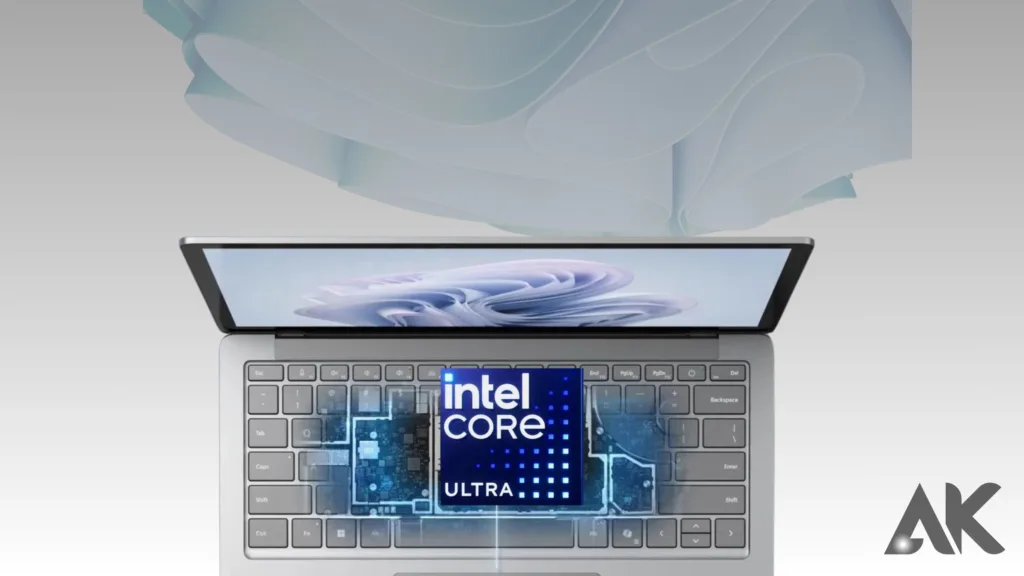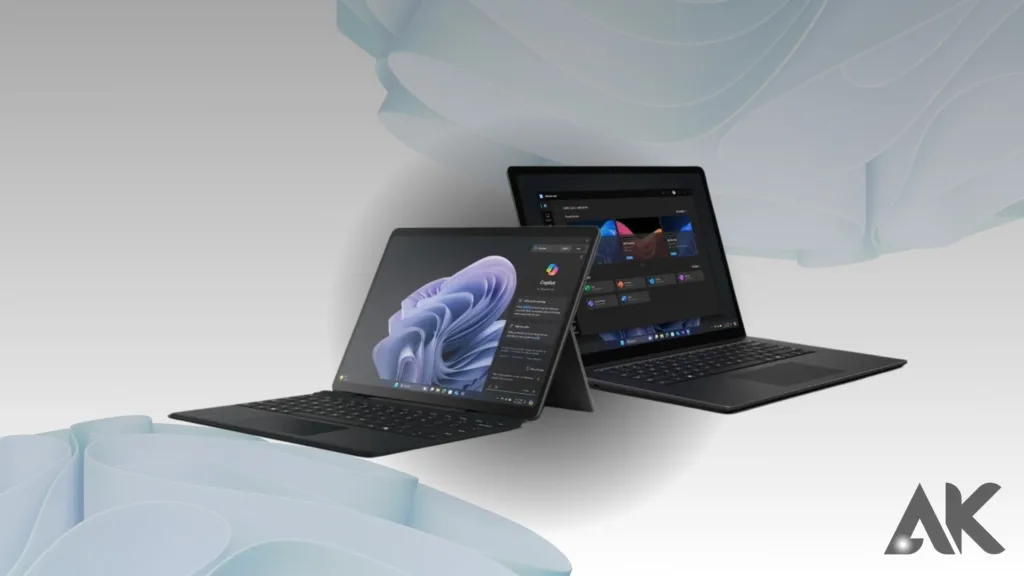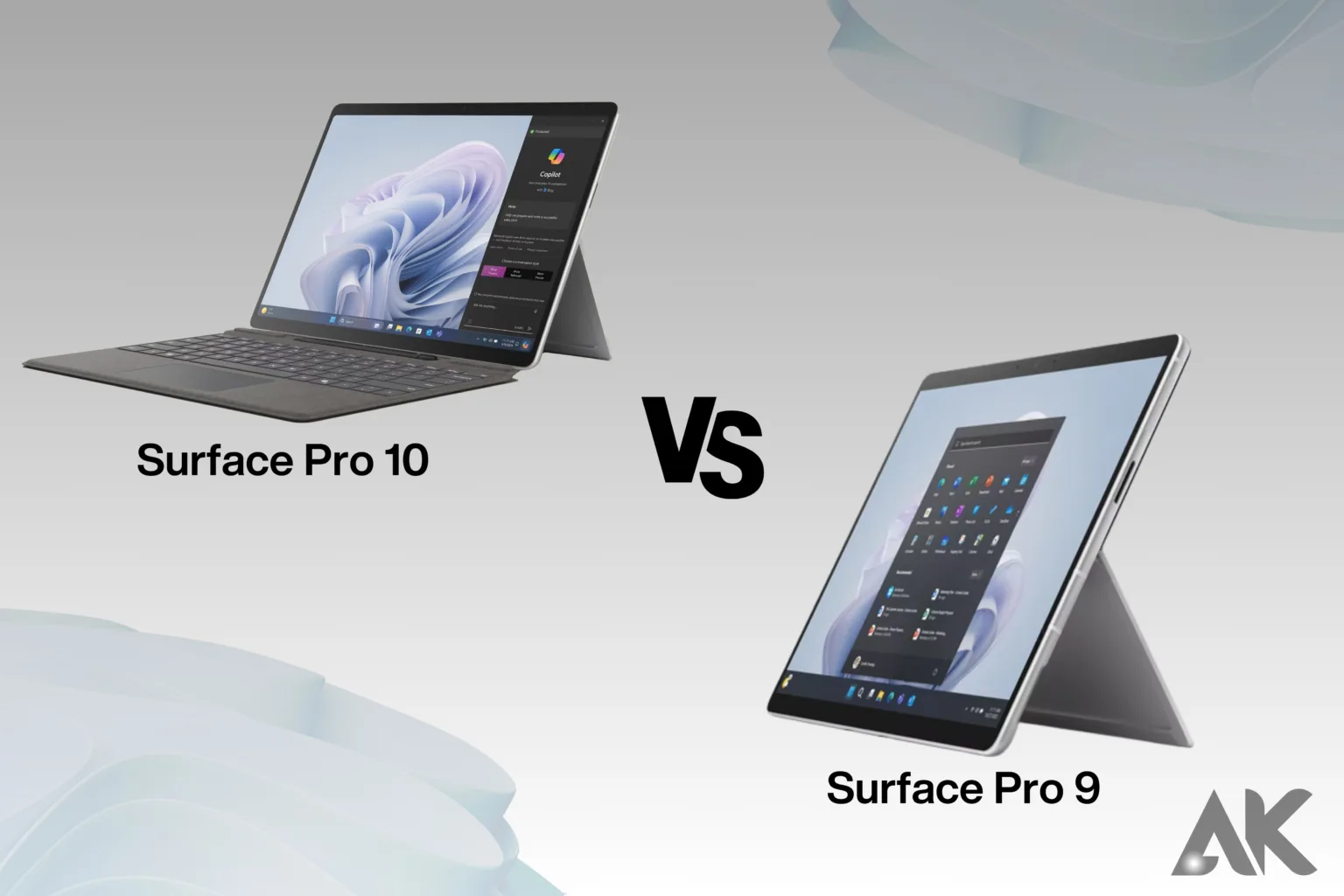There is an ongoing waltz of familiarity and innovation in the digital realm, where the old and the new collide constantly. Here we have the long-awaited battle between the Surface Pro 9 and its modern replacement, the Surface Pro 10. Think about it: the Surface Pro 9 has a dedicated fan base because of its dependable and tried-and-true performance. It brings back warm feelings, much like a beloved, worn-out book covered in leather. The Surface Pro 10, on the other hand, has just come out and is touting state-of-the-art specs, lightning-fast performance, and the future of work. It’s like a brand-new, flashy device that entices with the promise of limitless potential.
However, the problem is that you have to decide whether to remain with a reliable friend or give in to the temptation of advancement. Users are faced with a choice between clinging to the familiar and embracing the unfamiliar, in a constant struggle between nostalgia and progress.
New Intel Core Ultra processors

The most notable update is the arrival of the Intel Core Ultra CPU, the fourteenth generation of Core processors from Intel. The Surface Pro 9 uses Intel’s 12th-generation CPUs, two generations older than the current model. The Asus Zenbook 14 OLED is just one of several new Windows laptops expected to have the new Intel Core Ultra processors in 2024. These chips provide a significant performance improvement over their predecessors.
The amount of RAM that is accessible is also being increased by Microsoft. The Surface Pro 10 for business models may accommodate 64 GB of RAM, up from 32 GB on the Surface Pro 9. Microsoft claims that the new Surface laptop can last up to 19 hours on a single charge thanks to the Intel CPU, while the integrated NPU adds even more artificial intelligence capabilities.
This is typical of Microsoft’s “For Business” line; however, the lack of a Qualcomm chip arrangement is noticeable here. If you’re interested, watch for the release of a new Surface Pro 10 running Qualcomm later this year.
Even though 5G was only available on the Qualcomm model before, Microsoft has announced that it will soon be offering a Surface Pro 10 for Business with an Intel-powered 5G alternative.
Surface Pro 10 vs Surface Pro 9: Specs Comparison

| KEY FEATURES | ||
| What’s new | Performance is better than Surface Pro 8 by 65% for i5 models and 50% for i7 models. It has better features, including 12th Gen Intel Alder Lake CPUs, Intel Iris Xe graphics, WiFi-6E, Bluetooth 5.1, and up to 32GB of 5200 MHz LPDDR5 memory. Shifts in hue – It comes in four different shades: SapphireForestPlatinumGraphite | No MicroSD card reader Headset jackCan’t emulate native 64-bit applications Microsoft is currently working to bring 64-bit emulation to Windows 10 on Arm. |
| What’s missing | No MicroSD card readerNo Headset jackCan’t emulate native 64-bit applications Microsoft is currently working to bring 64-bit emulation to Windows 10 on Arm. | No headphone jack.No integrated Neural Processing Unit.Slightly less battery life with a smaller battery than the Surface Pro 8. |
| DISPLAY | SURFACE PRO X | SURFACE PRO 9 |
| Size | 13 Inches | |
| Info | Resolution: 2880 x 1920 (5.53M Pixels)Density: 267 PPIPixelSense™ DisplayAspect ratio: 3:2Inking: designed together with Surface PenTouch: 10 points multi-touchCorning® Gorilla® Glass10nm Oleophobic Coating | 13” PixelSense™ Flow DisplayResolution: 2880 x 19205.53M Pixels.Density: 267 PPIColor profile: sRGB and VividDynamic refresh rate: up to 120HzAspect ratio: 3:2Contrast ratio: 1200:1Touch: 10-point multi-touchBrightness: 450 nits maximum (typical), 2-nits minimumGorilla® Glass 5Adaptive ColorAuto Color Management supported Dolby Vision IQ™ support |
Same design as the Surface Pro 9
Since Microsoft hasn’t upgraded the Surface Pro 10 for Business’s chassis from the previous Surface Pro 9, design enthusiasts anticipating a redesign will be let down.
This shouldn’t come as a huge surprise since Microsoft rarely drastically alters the design of its products between generations. And other than maybe making the bezel thinner, Microsoft probably doesn’t have much of an agenda for the Surface Pro in terms of improvements. It can be quickly and easily propped up thanks to its practical kickstand and stylish all-metal construction.
Even though the Surface Pro 10 for consumers isn’t likely to see any big design upgrades, the possibility of an OLED screen makes it worth the wait.
Upgraded webcam
Those who use the Surface Pro 10 for regular business video calls may be ecstatic to hear that Microsoft is improving the camera. With a 114° field of view, the new front-facing camera can fit more subjects into the frame, and the video quality is 1400p, so you can see every detail.
The copilot key on the keyboard
A Windows Copilot key may be present on the keyboard of some Surface Pro 10 devices. Even though this isn’t a groundbreaking feature, it warrants some attention.
A new Copilot key will be added to Windows 11 keyboards, as was announced in January of this year. This was a huge affair since the last time a new key was introduced to the keyboard was in 1994 with the introduction of the Windows key, thus marking over 30 years since the last update. I must admit, it’s very cool to have a new key on the keyboard deck. Laptops like the Dell XPS 14 include the Copilot key.
With Windows Copilot now permanently installed on the Windows taskbar (for the vast majority of users), it might be prudent to have a separate key for Microsoft’s chatbot. This is particularly the case with Surface devices made by Microsoft. As I said before, having the ability to activate Copilot with the push of a button might be quite helpful if AI ever gains traction, which some believe (or hope) will happen.
Is the Surface Pro 10 worth getting over the Surface Pro 9?
Since our current knowledge is limited to the Surface Pro 10 business model, it is difficult to provide a satisfactory solution to this topic. The major features I listed above are likely to be in the consumer model, but we shouldn’t take that as a certainty.
Having said that, the consumer model ought to be an upgrade over its predecessor, assuming it has a Meteor Lake CPU, a better camera, and a Copilot key for good measure. Even if they aren’t the most innovative Windows laptops, Surface Pros are nonetheless popular due to their portability and respectable processing capability. Though it may be more of the same, the Surface Pro 10 is nonetheless rather good.
Conclusion
The Surface Pro 10 vs Surface Pro 9 showdown (2024) is a tech battle between the reliable Surface Pro 9 and its sleek successor, the Surface Pro 10. The Surface Pro 10 offers cutting-edge features, breathtaking speed, and a glimpse into the future of productivity. The new Intel Core Ultra processor, which marks the 14th generation of Intel Core chips, offers a big performance boost compared to its predecessors. Microsoft is increasing the amount of RAM available, with the Surface Pro 10 for Business now supporting 64GB of memory, while the Surface Pro 9 was restricted to up to 32 GB.
The integrated NPU allows the new Surface laptop to benefit from additional AI features, while Microsoft claims the Intel chip allows for a battery life of up to 19 hours. There is no Qualcomm chip configuration available, but Microsoft is planning an Intel-powered 5G option for the Surface Pro 10 for Business in the future. The Surface Pro 10 for Business is expected to have a new Qualcomm chip configuration later this year.
FAQS
Can you run Windows 10 on the Surface Pro 9?
Windows 10 users may purchase the Surface Pro 9. You can’t get a Surface Pro 9 with 5G unless you have Windows 11.
Is there going to be a Surface Pro 10?
Desktop computers with artificial intelligence are designed for a different kind of labor.
With great excitement, we are introducing the Surface Pro 10 for business and the Surface Laptop 6 for business, the first Surface AI PC designed specifically for businesses.

